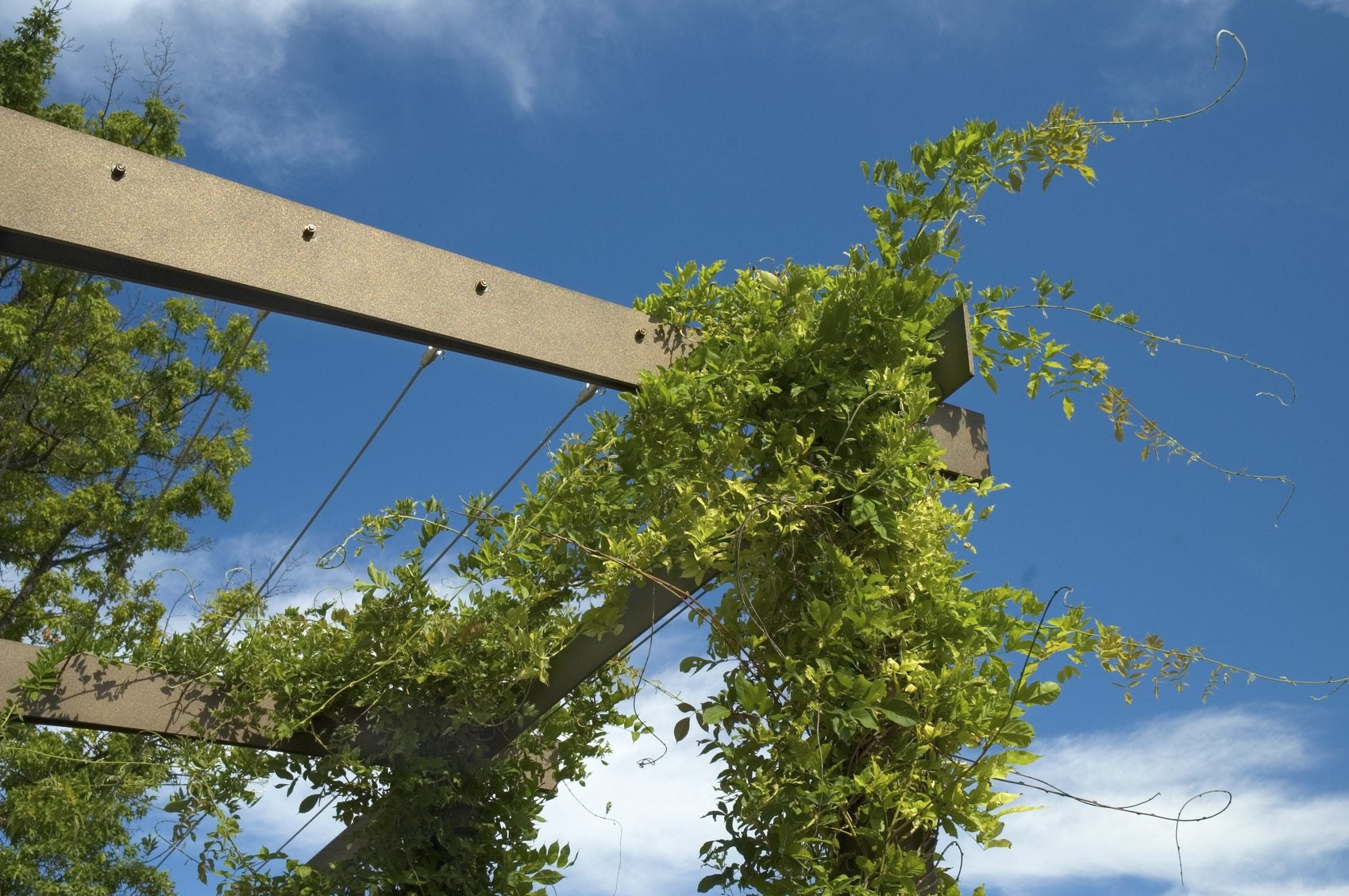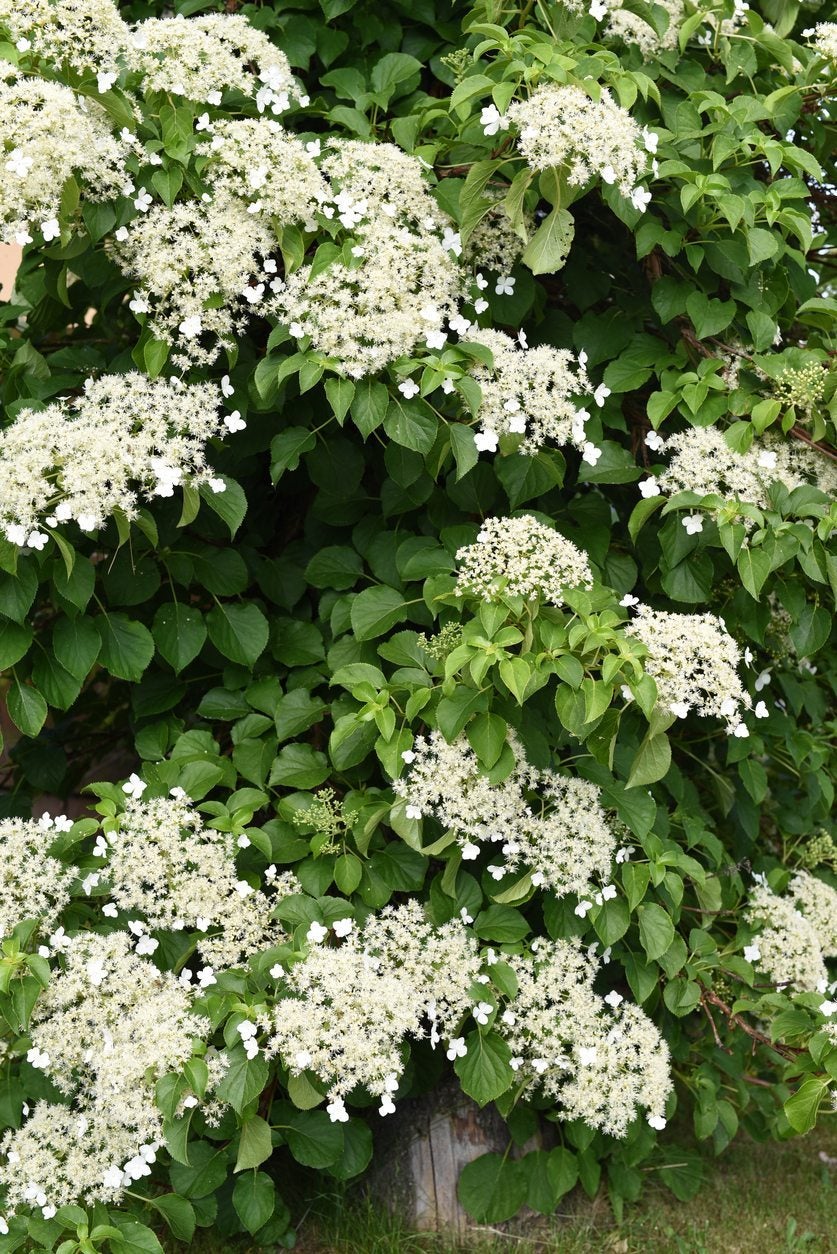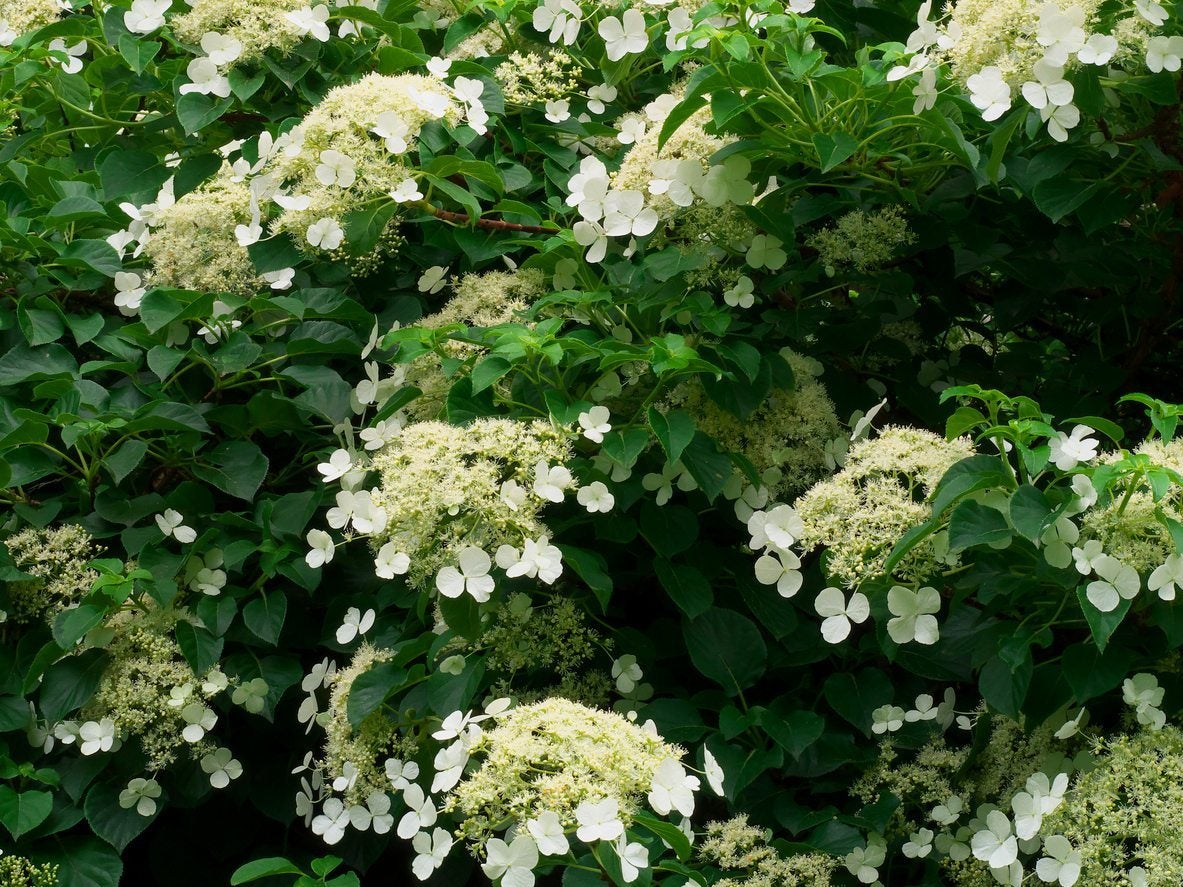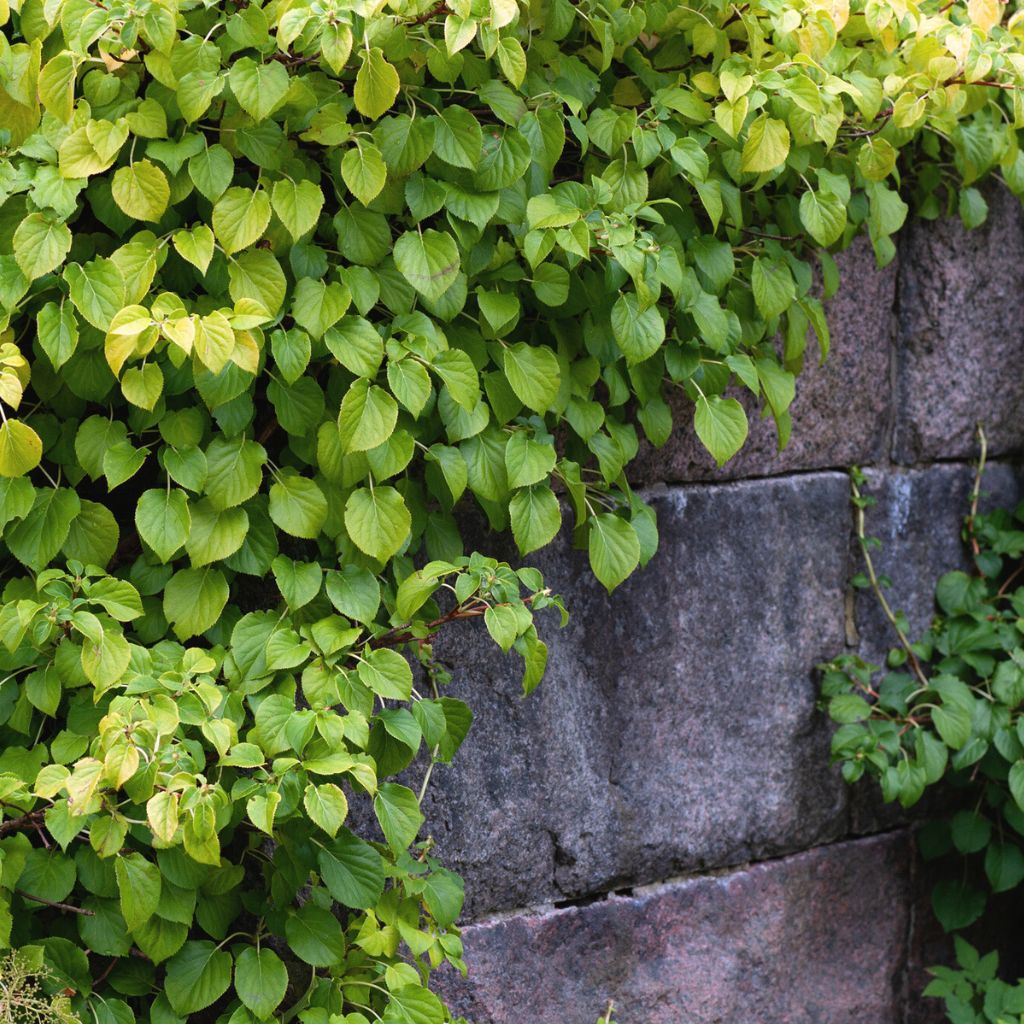Getting Climbing Hydrangea To Climb: How To Make A Climbing Hydrangea Climb


“First it sleeps, then it creeps, then it leaps” is an old farmer’s adage about plants that require a little extra patience, like climbing hydrangeas. Slow growing the first few years, once established, climbing hydrangeas can eventually cover an 80 foot (24 m.) wall. Native to the Himalayans, climbing hydrangeas have adapted to grow up trees and rocky slopes. If you have a climbing hydrangea not climbing, what do you do? Read on to learn more about attaching climbing hydrangeas to a support and getting climbing hydrangeas to climb like they’re supposed to.
Getting Climbing Hydrangea to Climb
Climbing hydrangeas climb by aerial roots that stick to surfaces. Climbing hydrangea attach best to rough textured surfaces like bricks, masonry, and tree bark rather than climbing along trellises. However, they do not cause any damage to buildings or trees they climb, other than leaving behind a sticky residue. Since they like part shade and specifically afternoon shade, they will grow best on a north or east facing wall, or up large shade trees. Getting climbing hydrangea to climb up trellises, arbors, or other supports is possible as long as the support is strong enough to hold up the heavy weight of a mature climbing hydrangea. Wooden trellises, arbors, etc. are easier for climbing hydrangea’s aerial roots to attach to than vinyl or metal. Climbing hydrangea will outgrow most trellises in time, but they can be helpful with young climbing hydrangea training. Climbing hydrangea can also be used as a groundcover for rocky slopes.
How to Make a Climbing Hydrangea Climb
If you have a climbing hydrangea not climbing, it may just be too young and putting all its energy into root establishment. It may also be having a hard time attaching to the support you are trying to get it to climb. You can give it a little help climbing up trellises, arbors, and such by loosely tying stray branches to the support the direction you want them to grow. When attaching climbing hydrangeas to support, use a soft but strong material like cotton string, twine, or nylon. Never use wire to attach any plant to anything, as the wire can seriously damage stems and branches.
Gardening tips, videos, info and more delivered right to your inbox!
Sign up for the Gardening Know How newsletter today and receive a free copy of our e-book "How to Grow Delicious Tomatoes".
-
 8 Noteworthy Native Azaleas Every Gardener Should Know – And Grow!
8 Noteworthy Native Azaleas Every Gardener Should Know – And Grow!Native azaleas offer brilliant blooms in a range of colors and sizes. Here are a few favorites to get inspired and start working on a native shade garden!
-
 Growing Climbing Roses: How To Create Elegant Displays With Maximum Blooms
Growing Climbing Roses: How To Create Elegant Displays With Maximum BloomsMaster the art of growing stunning climbing roses with this essential guide to creating vibrant, fragrant walls and structures all summer long.
-
 Evergreen Hydrangea Care – Growing An Evergreen Climbing Hydrangea
Evergreen Hydrangea Care – Growing An Evergreen Climbing HydrangeaIf you love your garden hydrangea plants but would like to try a new variety, take a look at evergreen hydrangea vines. These hydrangeas climb up trellises, walls or trees, but can also be grown as shrubs. Learn more about the plants in this article.
-
 Climbing Hydrangea Pruning – How To Prune Climbing Hydrangea Vines
Climbing Hydrangea Pruning – How To Prune Climbing Hydrangea VinesClimbing hydrangea is a spectacular plant, but it has a rambunctious nature and can get easily get out of control if you aren't careful. Pruning climbing hydrangeas isn't difficult and will keep the vines looking their best. Learn about climbing hydrangea pruning here.
-
 Climbing Hydrangea Won’t Bloom – When Does Climbing Hydrangea Bloom
Climbing Hydrangea Won’t Bloom – When Does Climbing Hydrangea BloomClimbing hydrangeas have charming lacecap flowerheads made up of a disc of tiny, tightly packed flowers surrounded by a ring of larger blossoms. This article explains what to do when your climbing hydrangea fails to bloom. Click here to learn more.
-
 Climbing Hydrangea Plant - Tips On How To Grow a Climbing Hydrangea
Climbing Hydrangea Plant - Tips On How To Grow a Climbing HydrangeaClimbing hydrangeas feature large, fragrant clusters of white flowers that bloom in late spring and summer against a backdrop of dark green, heart-shaped foliage. Learn how to grow them with info in this article.